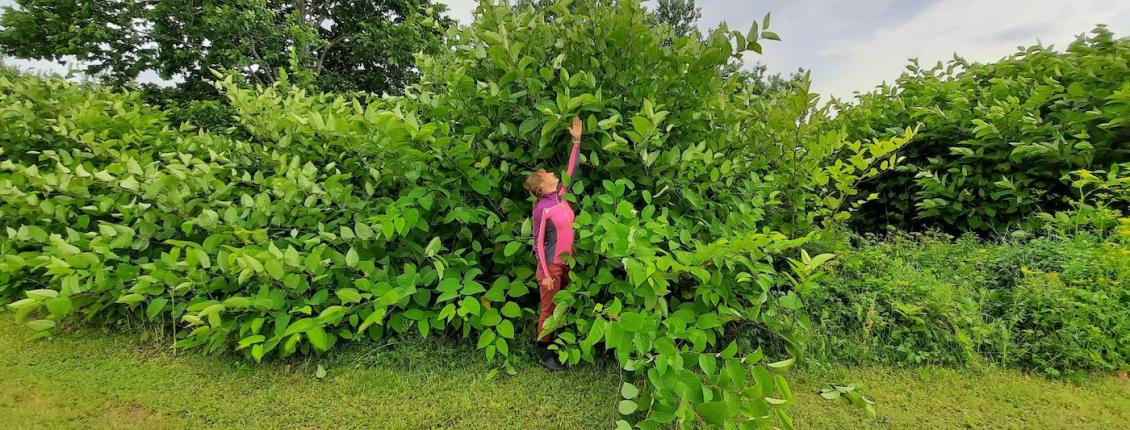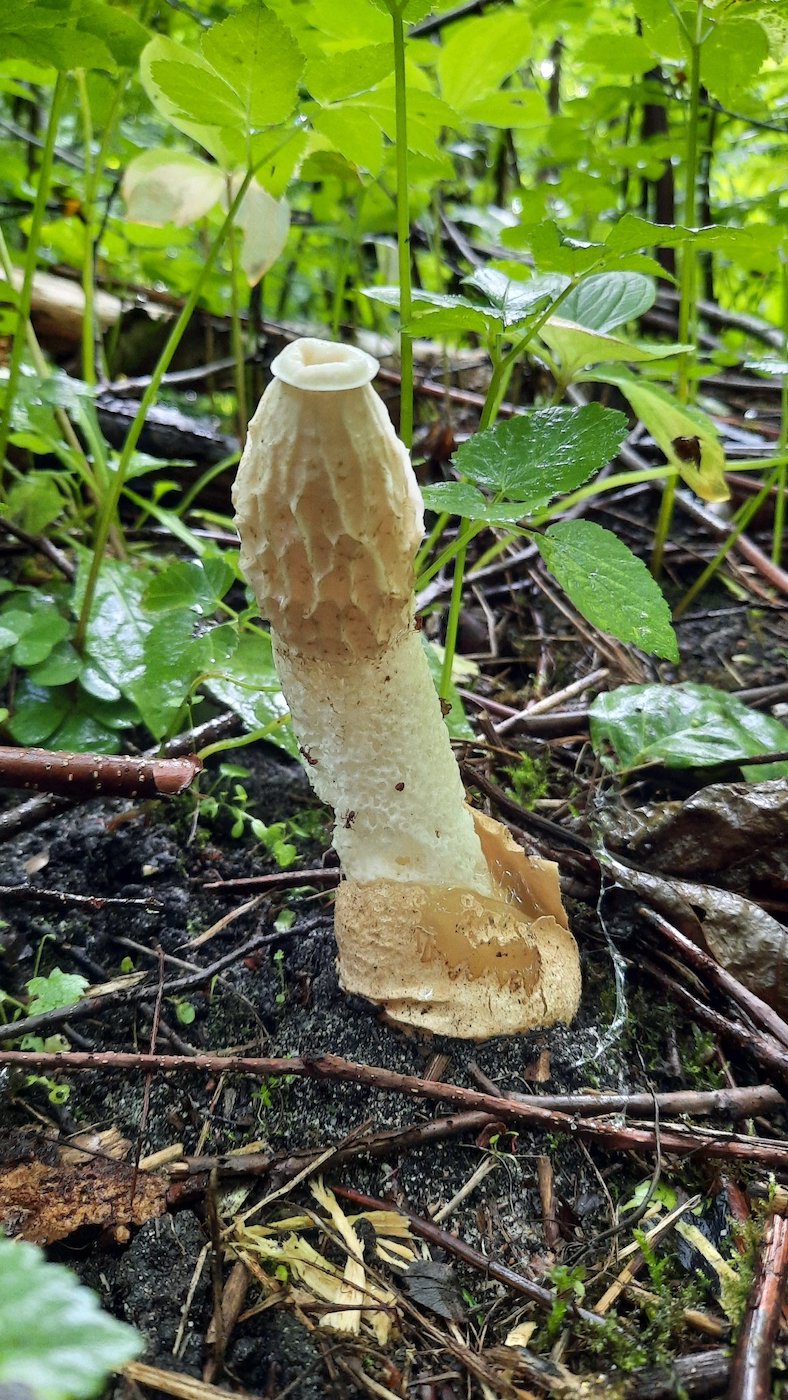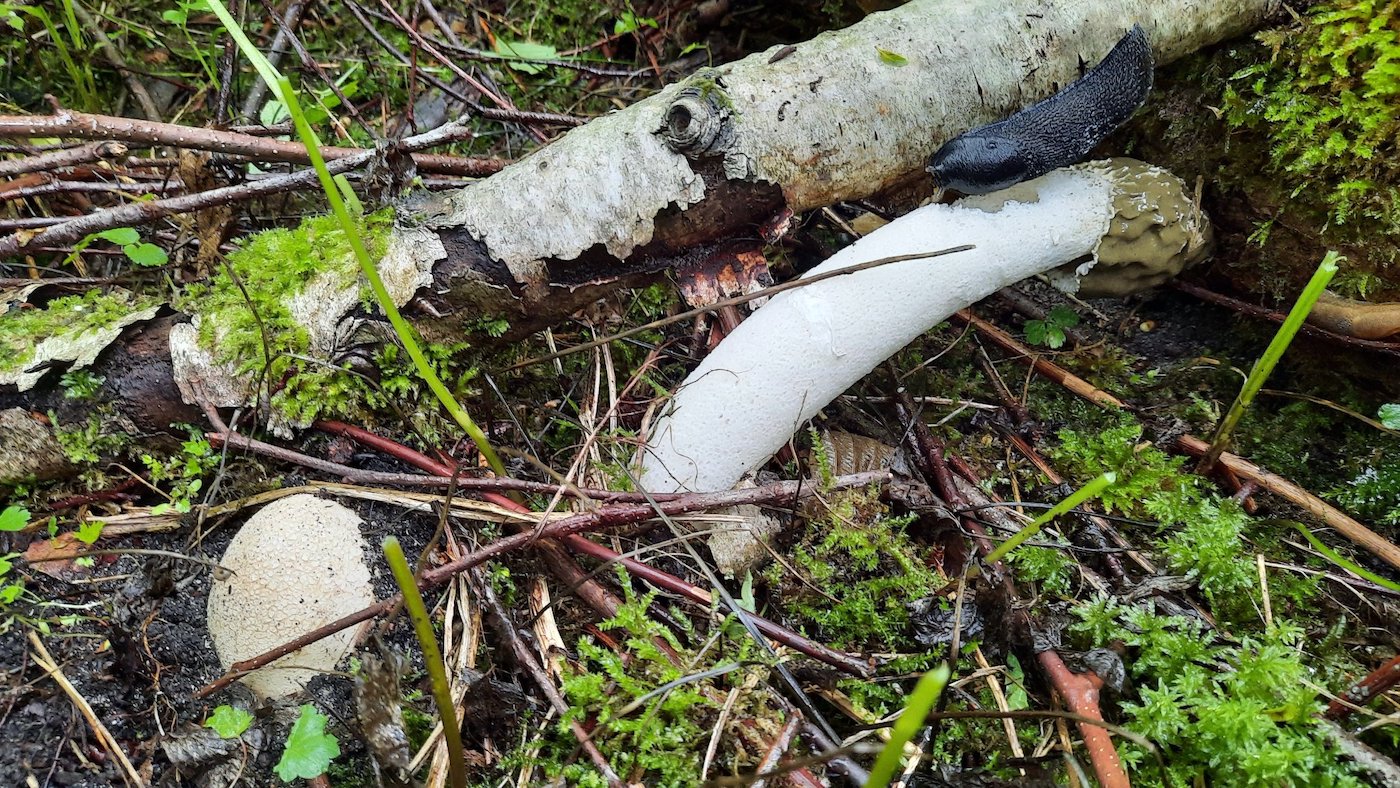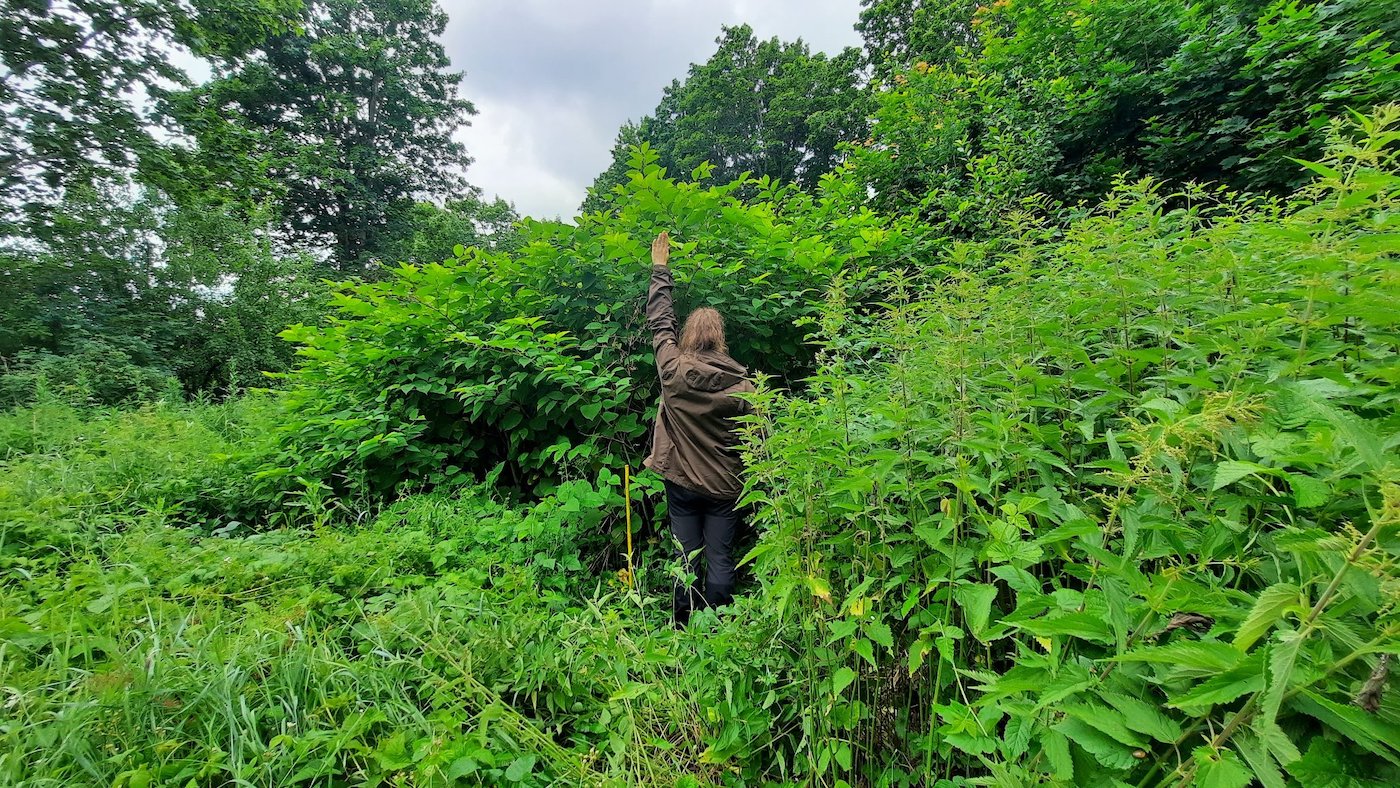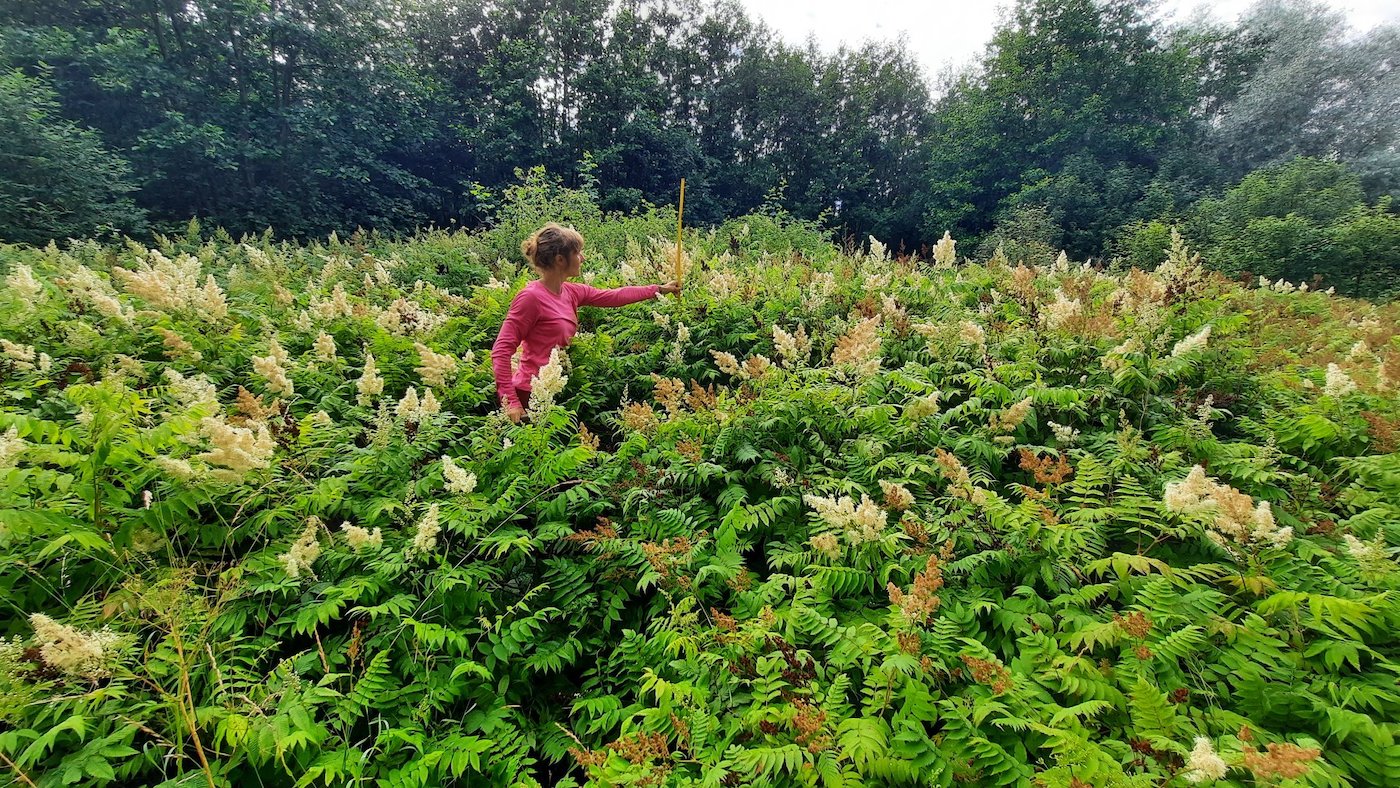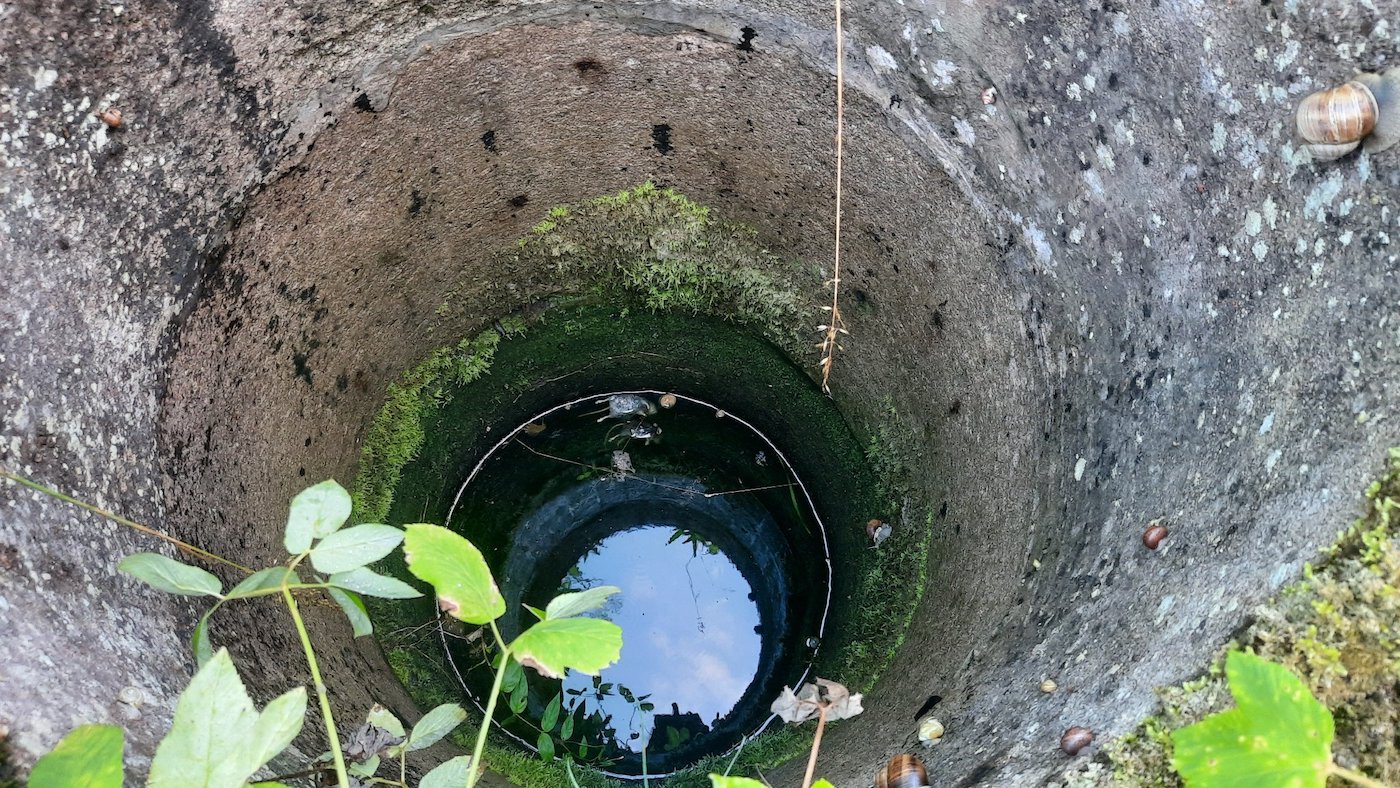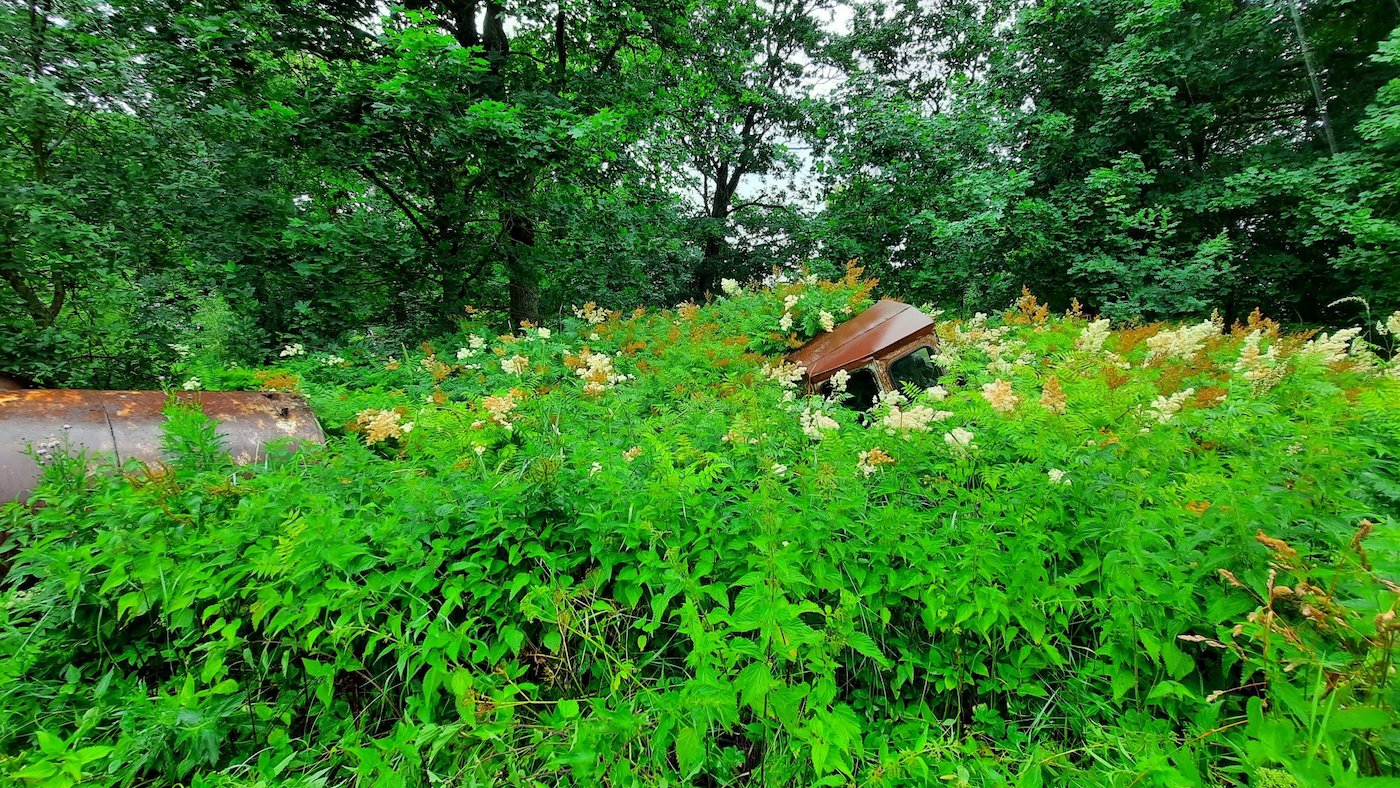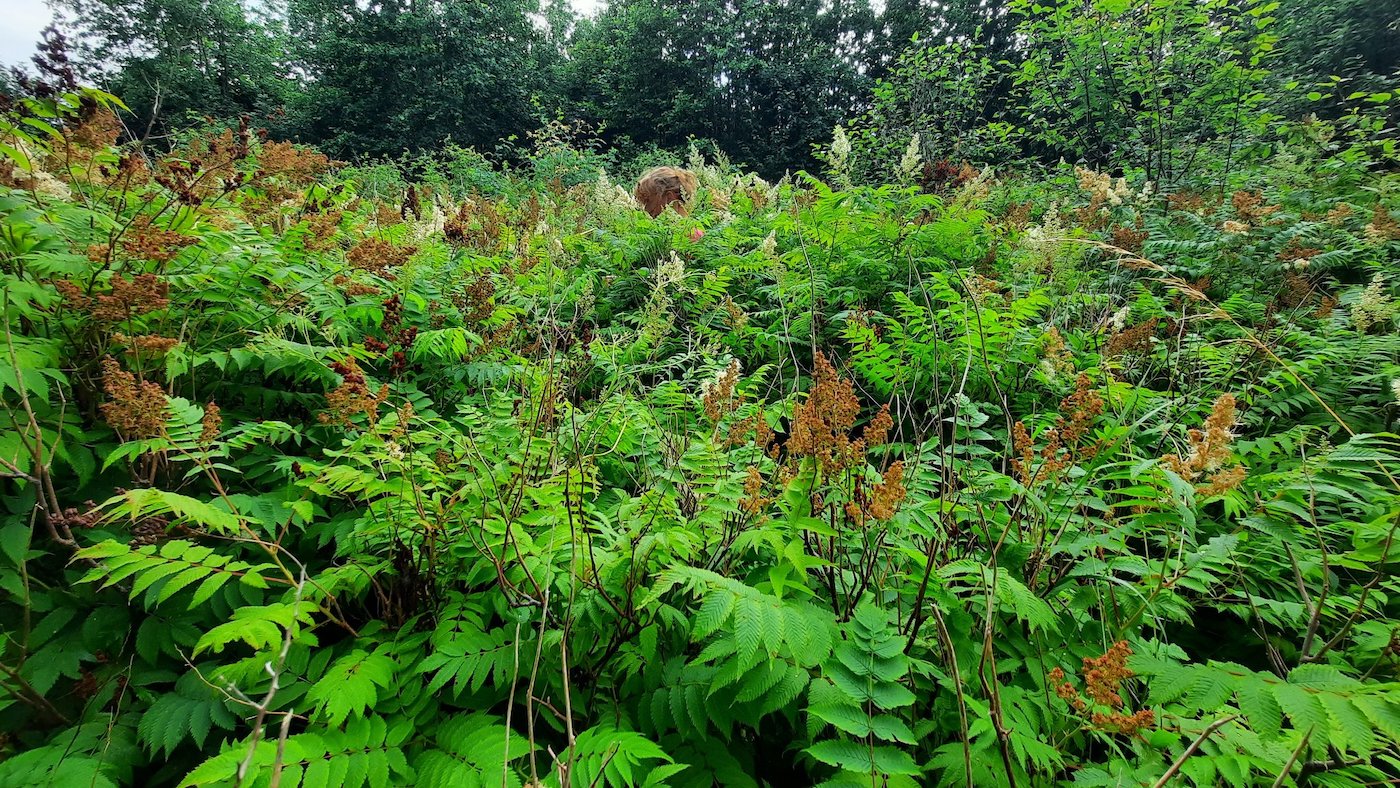July 26, 2022
Maris Sepp
Experts assess the population of four invasive species during field work
Despite the showers and thunderstorms last week, nature conservation experts from the Environmental Board went to see the invasive species mapped this spring to assess their growth and population. We can now say that these sites have been fully overtaken by invasive species. For example, the tallest measured Japanese knotweed reached a height of four metres. In addition, native species often fail to grow under these expansive colonies.
While working outdoors, other exciting or dangerous things were also discovered. A very deep open well was found in one old farm near where knotweed was growing, in which two mice had drowned. There were also a fair number of snails crawling on the walls. We are appealing to the landowners – look over your old farms and, if possible, cover any wells or deep openings! They pose a danger to both humans and animals!
A strong ‘corpse smell’ or the smell of brie cheese – to each their own – was present near a site where false spiraea was growing. In fact, this smell is produced by a fairly common mushroom in Estonia – the common stinkhorn (Phallus impudicus). At first, this fungus looks like a tiny puffball, and after a while, a fruiting body with an elongated shape develops. When they are young, these mushrooms are also supposedly edible. The awful smell is secreted by the common stinkhorn to attract flies that help disperse the spores of the fungus.
In addition to the activities of experts, we continue to invite you to participate in the campaign ‘Spot an Invasive Species!’, the prize of which is a delicious forest meal in the Forest Kitchen. You might also be able to taste the common stinkhorn there...
